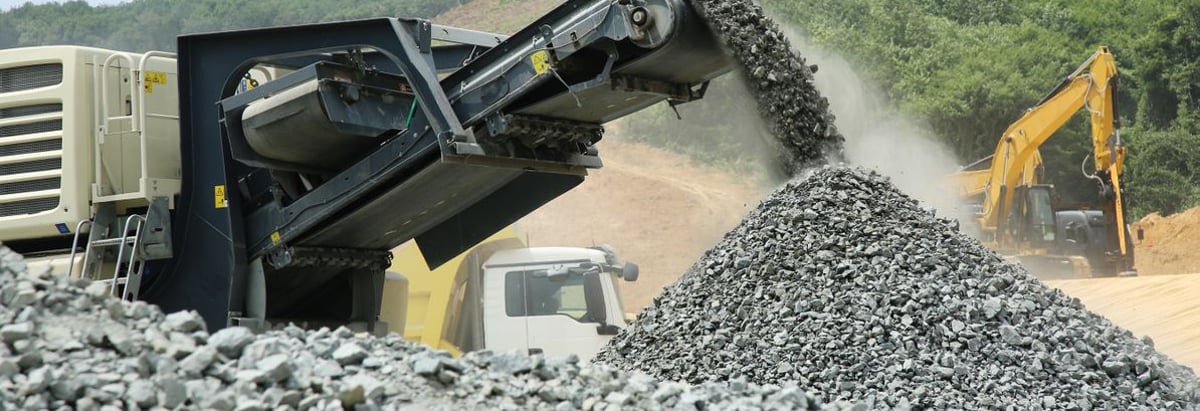- Japan
- /
- Basic Materials
- /
- TSE:5232
The Returns On Capital At Sumitomo Osaka Cement (TSE:5232) Don't Inspire Confidence

Ignoring the stock price of a company, what are the underlying trends that tell us a business is past the growth phase? Businesses in decline often have two underlying trends, firstly, a declining return on capital employed (ROCE) and a declining base of capital employed. Basically the company is earning less on its investments and it is also reducing its total assets. In light of that, from a first glance at Sumitomo Osaka Cement (TSE:5232), we've spotted some signs that it could be struggling, so let's investigate.
We've discovered 2 warning signs about Sumitomo Osaka Cement. View them for free.Return On Capital Employed (ROCE): What Is It?
For those that aren't sure what ROCE is, it measures the amount of pre-tax profits a company can generate from the capital employed in its business. The formula for this calculation on Sumitomo Osaka Cement is:
Return on Capital Employed = Earnings Before Interest and Tax (EBIT) ÷ (Total Assets - Current Liabilities)
0.034 = JP¥9.1b ÷ (JP¥358b - JP¥89b) (Based on the trailing twelve months to December 2024).
So, Sumitomo Osaka Cement has an ROCE of 3.4%. In absolute terms, that's a low return and it also under-performs the Basic Materials industry average of 8.0%.
View our latest analysis for Sumitomo Osaka Cement

Above you can see how the current ROCE for Sumitomo Osaka Cement compares to its prior returns on capital, but there's only so much you can tell from the past. If you'd like to see what analysts are forecasting going forward, you should check out our free analyst report for Sumitomo Osaka Cement .
What The Trend Of ROCE Can Tell Us
There is reason to be cautious about Sumitomo Osaka Cement, given the returns are trending downwards. About five years ago, returns on capital were 5.8%, however they're now substantially lower than that as we saw above. And on the capital employed front, the business is utilizing roughly the same amount of capital as it was back then. Companies that exhibit these attributes tend to not be shrinking, but they can be mature and facing pressure on their margins from competition. So because these trends aren't typically conducive to creating a multi-bagger, we wouldn't hold our breath on Sumitomo Osaka Cement becoming one if things continue as they have.
The Key Takeaway
All in all, the lower returns from the same amount of capital employed aren't exactly signs of a compounding machine. Investors must expect better things on the horizon though because the stock has risen 26% in the last five years. Regardless, we don't like the trends as they are and if they persist, we think you might find better investments elsewhere.
Sumitomo Osaka Cement does have some risks though, and we've spotted 2 warning signs for Sumitomo Osaka Cement that you might be interested in.
If you want to search for solid companies with great earnings, check out this free list of companies with good balance sheets and impressive returns on equity.
If you're looking to trade Sumitomo Osaka Cement, open an account with the lowest-cost platform trusted by professionals, Interactive Brokers.
With clients in over 200 countries and territories, and access to 160 markets, IBKR lets you trade stocks, options, futures, forex, bonds and funds from a single integrated account.
Enjoy no hidden fees, no account minimums, and FX conversion rates as low as 0.03%, far better than what most brokers offer.
Sponsored ContentNew: Manage All Your Stock Portfolios in One Place
We've created the ultimate portfolio companion for stock investors, and it's free.
• Connect an unlimited number of Portfolios and see your total in one currency
• Be alerted to new Warning Signs or Risks via email or mobile
• Track the Fair Value of your stocks
Have feedback on this article? Concerned about the content? Get in touch with us directly. Alternatively, email editorial-team (at) simplywallst.com.
This article by Simply Wall St is general in nature. We provide commentary based on historical data and analyst forecasts only using an unbiased methodology and our articles are not intended to be financial advice. It does not constitute a recommendation to buy or sell any stock, and does not take account of your objectives, or your financial situation. We aim to bring you long-term focused analysis driven by fundamental data. Note that our analysis may not factor in the latest price-sensitive company announcements or qualitative material. Simply Wall St has no position in any stocks mentioned.
About TSE:5232
Sumitomo Osaka Cement
Engages in the cement production business in Japan and internationally.
Excellent balance sheet average dividend payer.
Similar Companies
Market Insights
Community Narratives



